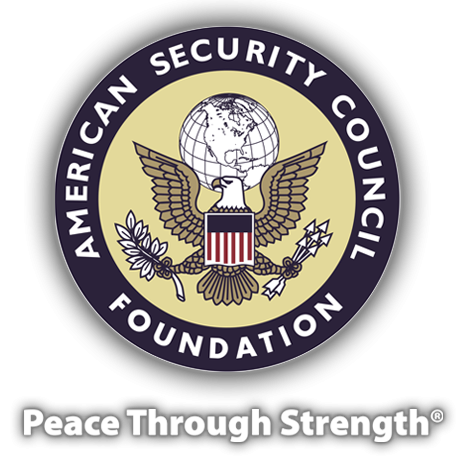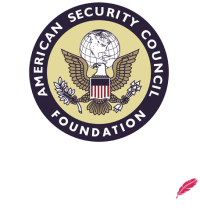Threats Abroad, Worries at Home

Dan Coats, whose lifetime of public service includes tours in Congress, the Senate, the diplomatic corps and the intelligence community, notes in the foreword to a new book* that “America faces a more complex, more volatile, more dangerous threat environment than anything we have seen since the Cold War.” He points to “state and nonstate actors…assaulting the global commons” and “trying to roll back democracy and topple the liberal international order.”
America and its Free World allies are finally waking up to these threats. But more needs to be done—and more rapidly and more concertedly—to ensure that Cold War II doesn’t metastasize into something far worse.
Threats
Before digging into the Free World’s to-do list, we need to consider the threats from without and the challenges within.
Coats is right: Parts of the Free World are under attack, and the entire Free World is under threat.
Vladimir Putin’s Russia is dismembering democratic Ukraine, occupies and has annexed swaths of Ukraine and Georgia, and spews out military threats against Moldova, Norway, Poland, Lithuania, Finland and Sweden—democracies all.
Xi Jinping’s China has absorbed Hong Kong, constructed and militarized islands in a bid to annex the South China Sea, threatened to seize democratic Taiwan, blockaded democratic Taiwan, attacked democratic India, and violated the territorial waters of U.S. treaty allies in Japan and the Philippines.
North Korea is sending arms to Russia and testing missiles that threaten South Korea and Japan.
Iran equips Russia with kamikaze-drones, lobs missiles at democratic Israel, bankrolls Hezbollah, Hamas and the Houthis, harbors al-Qaeda’s leader, and targets American troops. Hezbollah shells democratic Israel. Hamas savagely assaulted democratic Israel.
If these regional threats are not checked, they will surely grow—and will likely mutate and merge into a global conflagration. It pays to recall that the antecedent to World War II was a series of seemingly-disparate regional wars and military diktats launched by aggressor states. Preventing a 21st-century replay of that will require clarity and capability on the part of the Free World.
Even as the axis of autocrats takes aim at the Free World, another worrisome trend has emerged: According to Freedom House, the world has endured 17 consecutive years of decline in free government, and “39 percent of the world’s people live in countries rated not free, while only 20 percent live in free countries.”
By contributing to increased risks and increased costs for America and its allies, this retreat of freedom is threatening America’s interests. America thrives in a world where free governments and free markets flourish. America is more secure in a world characterized by more freedom. And America is less secure when freedom is in retreat. Free peoples, after all, don’t threaten American citizens, territory or interests; don’t take up arms against one another; don’t waste lives and treasure waging war against one another; and don’t undermine the liberties of one another. Tyrants do those things. More tyrant regimes spawn more threats to freedom.
For those nations they cannot directly attack, the tyrant regimes are working to erode support for liberal democracy internally. Putin’s disinformation operations, for instance, are destabilizing political institutions across the Free World, splintering the Free World and normalizing business-suit autocracy. Similarly, Beijing is actively influencing the Free World’s cultural institutions through coercion, trojan-horse aid programs, relentless cyberattacks and election interference.
Worries
That serves as a bridge to the challenges within the Free World.
Freedom House warns that “democracies are being harmed from within by illiberal forces” aiming “to corrupt and shatter” the very institutions that keep the Free World, well, free. Polling finds that “a wide range of the American people, of all political stripes, seek leaders who are fundamentally anti-democratic”; that 56 percent of Americans want to “silence the troublemakers spreading radical ideas”; that 53 percent say Americans should “do what the authorities tell us to do”; and that 29 percent of believe the country would be better if “non-elected experts” handled political decisions.
These sentiments feed into the notion that the solution to our problems is found in concentrated executive power—something our founders feared and our enemies promote.
In addition, a growing segment of the Free World is apathetic about freedom and oblivious to what history teaches about freedom’s enemies. For a time, Soviet communism’s collapse served as proof not just of the superiority of free government and free exchange, but of the futility of government by coercion and economics by top-down control. Yet among many of those who have come of age since the end of the Cold War, there’s neither an innate recognition that free exchange is better than the alternative nor a default belief in the power of individual liberty: 49 percent of American adults born since 1981 (the Millennial Generation and Generation Z) would “prefer living in a socialist country,” and 51 percent of Millennials reject capitalism.
Finally, we come to a potent new strain of isolationism in America. Just 20 percent of Americans favor overseas engagement; 41.9 percent literally “favor greater isolationism”; 51 percent say the U.S. should pay less attention to problems overseas and concentrate on problems at home—up from 30 percent in 2002. And there are growing blocs in the party of TR, Eisenhower and Reagan and in the party of FDR, Truman and Kennedy that want America to pull back from the world. This is worrisome because history teaches that threats overseas don’t stay “over there.”
Roadmap
The antidote to these challenges at home is to educate the American people on the nature of the threats we face overseas, and the antidote to the threats abroad is to ensure that the Free World’s military capabilities meet those threats. Both of these tasks require policymakers and organizations of influence to make a better case for defending the Free World and deterring the tyrant regimes.
For inspiration and guidance, we should turn to NSC-68—the pivotal national-security document the Truman administration used to guide the containment strategy that won Cold War I. NSC-68 offers a helpful roadmap for navigating Cold War II.
NSC-68, for instance, explained that our Cold War enemy was “waging…political, economic and psychological warfare” and “weakening the relative world position of the United States”; that “the integrity and vitality of our system is in greater jeopardy than ever”; that “every institution of our society is an instrument…sought to stultify and turn against our purposes”; that if the U.S. retreats, the enemy will secure an “imposition of its kind of order in the world”; that success depends on recognition by “all free people” that “the Cold War is in fact a real war in which the survival of the Free World is at stake”; that “budgetary considerations will need to be subordinated to the stark fact that our very independence as a nation may be at stake”; that America must lead the Free World toward “common purpose”; that the Cold War would require of the American people “ingenuity, sacrifice and unity…and the tenacity to persevere until our national objectives have been attained.”
The more things change, the more they stay the same.
Our next issue will examine how these concepts can be used as a framework for understanding, prosecuting and winning Cold War II.











